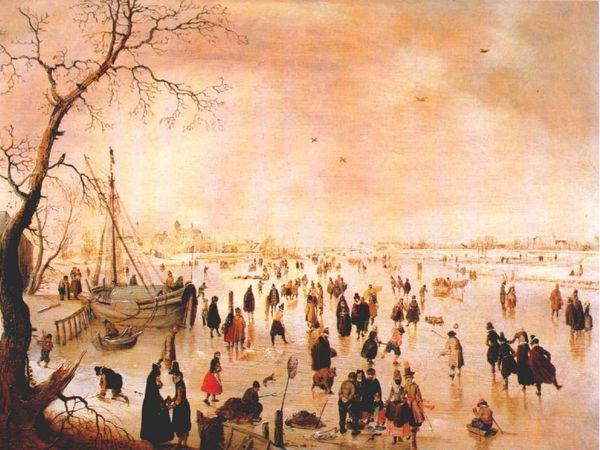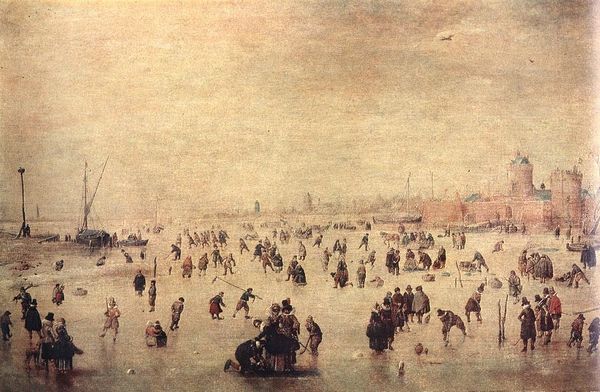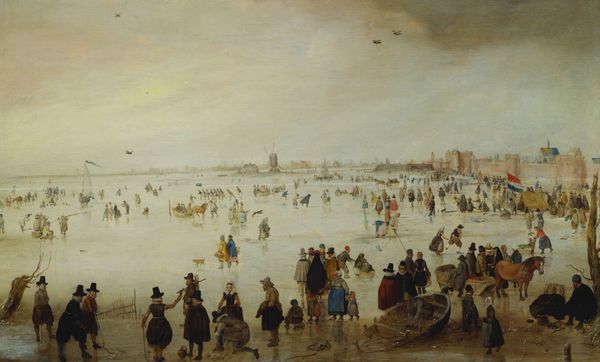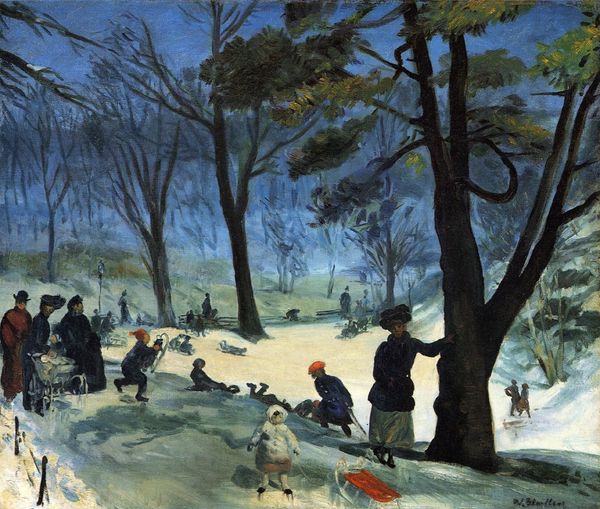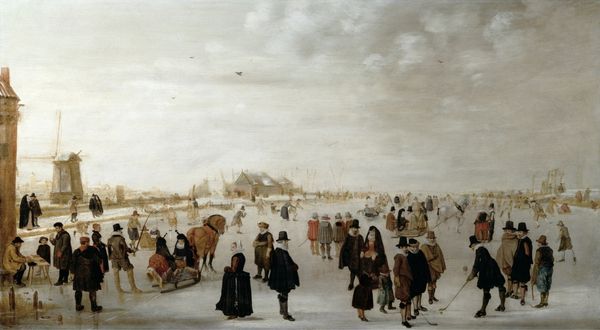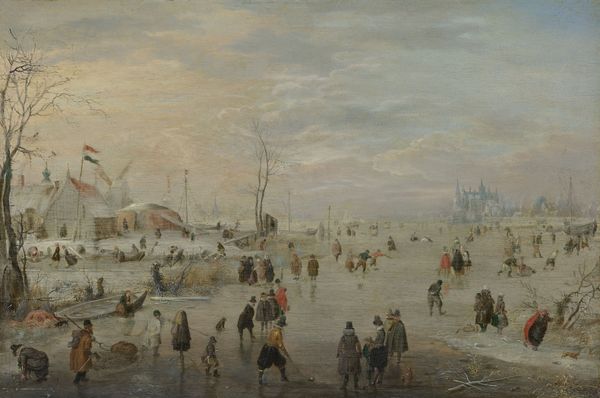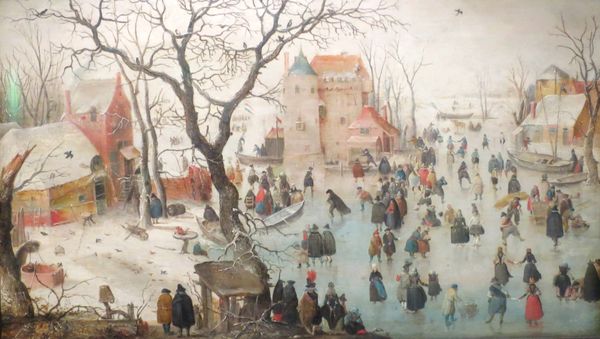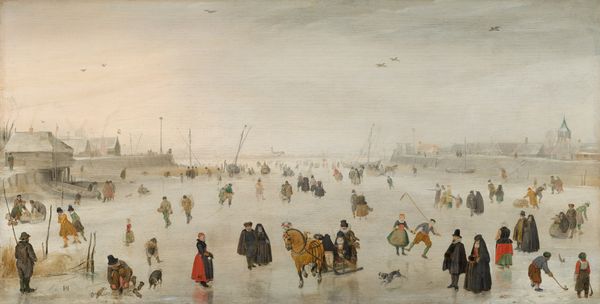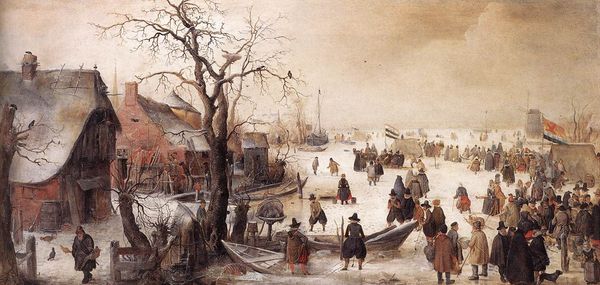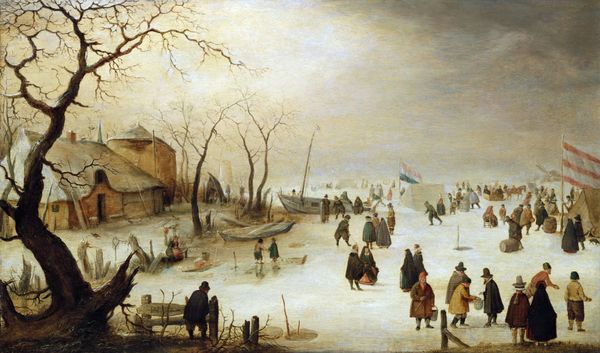
painting, oil-paint
#
painting
#
impressionism
#
oil-paint
#
landscape
#
impressionist landscape
#
oil painting
#
genre-painting
#
modernism
Dimensions: 89.9 x 72.1 cm
Copyright: Public domain
Curator: What a scene! Looking at "Skaters in the Bois de Boulogne," painted by Renoir in 1868, the first impression is almost…chilly. Despite all the activity, it feels rather muted. Editor: I see that coolness too. Let's remember the Bois de Boulogne was not just a park but a created space for the Parisian Bourgeoisie. Skating became a fashionable winter activity under the Second Empire. Renoir isn't simply painting a landscape; he's depicting a very specific segment of Parisian society at leisure. Curator: Yes, it's certainly not a picture of egalitarianism! Notice the fashion, the top hats and long coats…But technique-wise, he uses rapid brushstrokes to capture movement and light. See how he renders the frosty atmosphere with delicate grays and whites? It feels like a moment snatched from real life. What does it say about these people being at leisure, given their privileged existence? Editor: That 'real life' moment is key, and connected to Impressionism as a whole. Think about photography's impact: this suggests a desire to capture transient, ephemeral moments, ones indicative of modernity, including its class divisions. Even something as seemingly simple as skating held symbolic meaning, reflective of the city’s rapid modernization under Haussmann. This park was explicitly redesigned as a stage for this privileged social class. Curator: And stage it is – the arrangement of figures certainly lends a theatrical, almost staged quality, from the folks milling about in the foreground to the barely-visible individuals in the snowy distance. It's as much about the gaze as it is about what’s being observed. The painting feels intentionally voyeuristic. What feelings and narratives may have been intentionally left outside this work by Renoir and this demographic? Editor: Precisely. I see Renoir presenting us with a seemingly joyful, innocuous scene, while really what it reveals are carefully curated performances of leisure, with class literally shaping our experience. Thinking critically about representation—it demands that we consider what socio-political elements are intentionally and unintentionally included. Curator: This conversation is making me reconsider that initial feeling of 'chilliness,' I have much more warmth, contextually! Editor: I couldn't agree more. There's so much hidden history embedded in even the simplest snapshot of leisure.
Comments
No comments
Be the first to comment and join the conversation on the ultimate creative platform.

